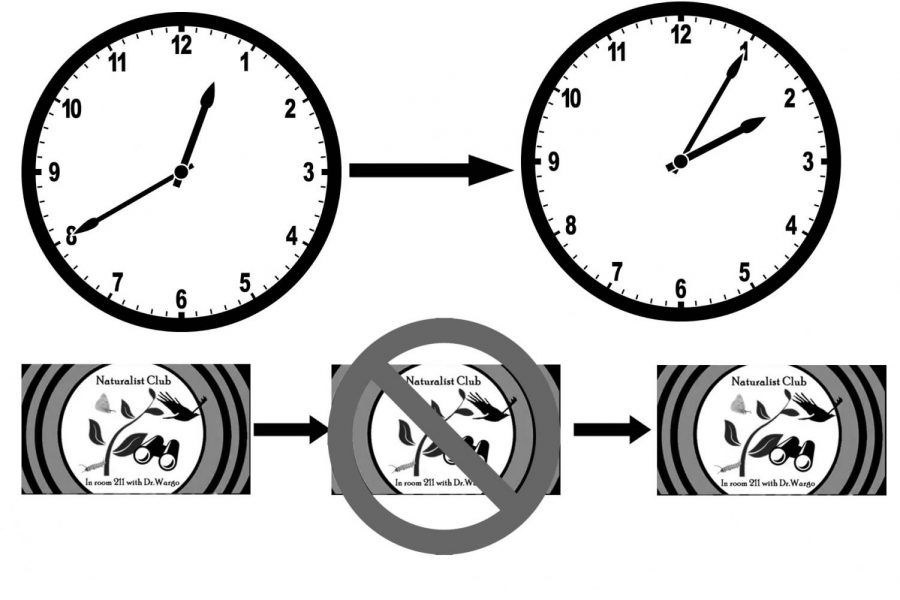Growth and development
Changes in PLT reflect different events throughout the year
When the bell to signal the end of fourth block ring, students flood the hallways, trying to get to their next room for Personal Learning Time (PLT). Some teachers choose to stand outside the classroom while others opt to stay in their room and get ready for the next 30 minutes. While some students head off to clubs — which they had signed up for in the office that morning — others head to their regular room to work on homework or perhaps a project that is due the next day. Though students spend their time doing what they need, or in some cases want, to do, there have been many changes to PLT throughout the year that has had effects on both teachers and students.
Though PLT originally started out between third and fourth block, it is now altered to fall after fourth block, which replaced Academic Assistance Period (AAP), from earlier years. One of the main reasons for doing so was athletes were missing more class time than before. For instance, if the Cross Country team had a dismissal at 1:45 P.M., they would be missing 45 minutes of fourth block instead of 15 minutes if PLT was at the end of the day. This prompted PLT to once again be at the end of the day.
“Although it is difficult for many students to stay concentrated at the end of the day, I believe it works better than it did between third and fourth block because of early dismissals for sports, club meetings, guidance counselor meetings, and Big Brothers Big Sisters,” Communications teacher Bradley Baldwin said, “Having PLT at the end of the day works much better for me because I coach middle school volleyball and have to leave early for away games. Also, as the SADD Club Sponsor, it is beneficial to have our meetings at the end of the day because some of our activities must occur at the end of the day (mock crash, assemblies, etc.)”
More recently, a hiatus happened to club meetings that happened during PLT. The main reasons for this were students were out in the hallways without passes, going to clubs without first signing up in the main office or even leaving the school altogether before the last bell of the day had rung. In order to fix these problems, movement in the hallways — except for special instances like students getting called to the guidance office — was restricted. To many students, this was not a surprise, as the same events had occurred last year when many students were going to clubs without signing up.
“As far as the changes that have been made, I think they have all been made with good intentions. We’ve had problems with students not going to their PLT classes, not going to the teachers’ rooms who gave them passes, and wandering the halls. These were all issues that needed to be addressed,” Spanish teacher Ruthanne Gudzan said, “I do think things have improved with the changes that have been made. I don’t think any of these changes were unnecessary. Students are our responsibility while they’re in this building, and we need to make sure they’re safe and accounted for at all times.”
About a week later, this hiatus on clubs ended, so students could go to where they went before. However, now when a student, for instance, needs to get help for something like math, they need to get a pass from the teacher they are going to and give it to their regular PLT teacher. As for sign-ups in order for students to attend clubs, the sheets system still exists but is now moved to the cafeteria. This was due to the fact that many more students would be going to the cafeteria for breakfast and/or lunch, so that provides them an easier opportunity to sign-up, as opposed to the sign-up sheets being in the office.
Overall, the changes of PLT throughout the year is a good reflection of the ways that the school and student body has shifted and changed throughout the year. From a slight shift in scheduling to where sign-up sheets sit, every change matters in a school scenario. Though the end of the school year approaches, they may still be more changes involving PLT to come.



